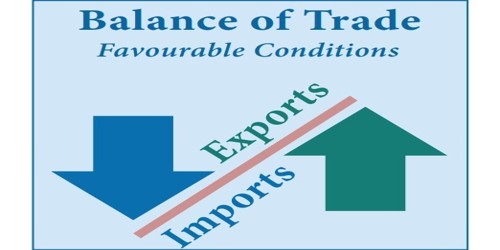
In today's fast-paced world, many individuals are seeking ways to supplement their primary income. One effective strategy is through the development of side hustles. A side hustle is a form of income-generating activity that is pursued in addition to one's primary job.
Understanding Side Hustles
What is a Side Hustle?
A side hustle refers to any freelance work or piece of business that you engage in outside of your main employment. This can range from casual gigs such as pet sitting or ridesharing to more structured small businesses like e-commerce or consulting. The primary goal of a side hustle is to generate additional income, but it can also provide valuable experiences, enhance skills, and even lead to full-time business opportunities.
The Importance of Side Hustles
Additional Income Stream: Many people are finding it increasingly difficult to get by on a single salary. Side hustles provide a way to create additional income, which can ease financial stress and help you meet your financial goals.
Debt Repayment: Side hustles can serve as a powerful tool in paying off debt. Whether you have student loans, credit card debt, or other financial obligations, the extra income can accelerate repayment plans.
Savings and Emergency Funds: With the unpredictability of life, having a robust emergency fund is essential. Side hustles can enable you to save more and create a safety net for unexpected expenses.
Financial Independence: For many, a side hustle can be the path to financial independence. By diversifying income sources, you reduce reliance on a single job and create greater financial security.
Evaluating the Need for a Side Hustle

Before jumping into a side hustle, it is important to evaluate your current financial situation and motivations:
Assessing Your Financial Goals
Understand what you want to achieve by starting a side hustle. Are you aiming to save for a specific purchase, pay down debt more effectively, or simply increase your monthly cash flow? Defining your financial goals will help shape your side hustle planning.
Time Considerations
Evaluate how much time you can realistically dedicate to a side hustle. Many individuals have demanding jobs and personal responsibilities, so it’s essential to find a balance that prevents burnout while still allowing for your side income pursuits.
Skills and Passions
Consider your skills and passions when evaluating potential side hustles. Engaging in work that aligns with your interests can make the experience enjoyable and fulfilling, leading to higher motivation and better results.
Popular Types of Side Hustles
There are countless ways to boost your income through side hustles. Here are some popular categories to explore:
1. Freelancing
Freelancing offers flexibility and the potential for high income. Common freelance jobs include writing, graphic design, web development, and digital marketing. Platforms such as Upwork, Fiverr, and Freelancer provide opportunities to connect with clients seeking specific skills.
2. Online Teaching and Tutoring
If you excel in a particular subject or skill, online teaching or tutoring can be an excellent option. Platforms like VIPKid, Tutor.com, and Teachable allow you to share your knowledge and earn money from home.
3. Selling Products Online
E-commerce continues to grow, making it increasingly accessible for anyone to sell products online. You can consider dropshipping, print-on-demand services, or creating handcrafted goods to sell on platforms like Etsy, Amazon, and eBay.
4. Pet Services
For animal lovers, pet sitting, dog walking, or grooming can be fulfilling and lucrative side hustles. Websites like Rover and Wag! make it easy to connect with clients in your area.
5. Ride-sharing and Delivery Services
Companies like Uber, Lyft, DoorDash, and Postmates provide opportunities to earn extra income by driving or delivering items in your spare time. You can work when it’s convenient for you, making it suitable for those with unpredictable schedules.
6. Social Media Management
Many small businesses seek help with their online presence but may not have the budget for full-time personnel. If you have experience with social media platforms, you can offer management services to help businesses grow their online audiences.
7. Blogging and Vlogging
If you have a passion for a specific topic, consider starting a blog or YouTube channel. Over time, you can monetize your content through ads, affiliate marketing, and sponsorships. However, be prepared to put in the initial effort without guaranteed income.
Crafting a Successful Side Hustle

Once you've identified a side hustle that resonates with you, crafting a strategy for success is essential. Here are some steps to consider:
1. Conduct Market Research
Understanding your niche, target audience, and potential competitors is vital. Conduct research to identify gaps in the market and tailor your offerings to meet those needs.
2. Create a Business Plan
While the scale may be less formal than a traditional business, creating a business plan can help clarify your objectives and outline your strategy. Include details such as pricing, marketing strategy, and expected expenses.
3. Set Up a Workspace
Establish a dedicated workspace, whether at home or elsewhere, to help separate your side hustle from your personal life. A designated workspace can improve productivity and focus.
4. Build an Online Presence
In today’s digital world, having a solid online presence is key to attracting clients and customers. Create a professional website, and utilize social media to promote your services or products.
5. Network and Build Relationships
Networking can help you discover new opportunities and connect with potential clients. Attend local events, join online communities, and engage with others in your niche to expand your network.
6. Invest in Skills and Tools
Consider investing in courses or tools that can enhance your side hustle. Whether it is software for managing your business, learning new skills, or marketing your services, investing in yourself can yield significant returns.
Managing Time and Energy
Balancing a side hustle with a full-time job and personal life can be challenging. Here are some tips for effective time management:
1. Create a Schedule
Establish a clear schedule for your side hustle, allocating specific times during the week for work. Prioritize tasks and set deadlines to maintain productivity.
2. Set Boundaries
It is vital to set boundaries between your primary job, side hustle, and personal life. Communicating these boundaries to family and friends can prevent interruptions and help you maintain focus.
3. Utilize Productivity Tools
Use tools and apps to streamline your workflow. Project management tools like Trello, Asana, or Todoist can help you organize tasks and meet deadlines effectively.
4. Practice Self-Care
Balancing multiple responsibilities can lead to stress and burnout. Prioritize self-care by ensuring you take breaks, engage in physical activity, and dedicate time to relaxation.
Tax Considerations for Side Hustles

While side hustles can be financially rewarding, it is essential to understand the tax implications. Here's what you should consider:
1. Report Additional Income
The Internal Revenue Service requires individuals to report all income, including earnings from side hustles. Keep accurate records of your earnings and expenses to ease the filing process.
2. Self-Employment Tax
If your side hustle generates a profit, you may be responsible for self-employment tax. This tax covers Social Security and Medicare contributions similar to FICA taxes withheld from traditional employment.
3. Deductions for Business Expenses
You can offset your side hustle earnings by deducting legitimate business expenses. This includes costs related to materials, supplies, equipment, advertising, and any workspace used for your business.
4. Consider Estimated Taxes
If you expect to owe more than a certain amount in taxes due to your side hustle, you may need to make estimated tax payments throughout the year. Consult with a tax professional to determine your obligations.
The Potential Pitfalls of Side Hustles
While side hustles can provide numerous benefits, being aware of potential pitfalls is crucial for long-term success:
1. Burnout
Juggling a full-time job with a side hustle can lead to exhaustion. Be mindful of your limits and don’t hesitate to adjust your workload as needed.
2. Distraction from Primary Job
It is essential to ensure that your side hustle does not interfere with your primary job responsibilities. Maintain professionalism and ensure that your side work does not conflict with your employer’s policies.
3. Financial Risks
Some side hustles involve upfront investments, which can pose a financial risk if not managed wisely. Conduct thorough research and consider starting small to minimize potential losses.
4. Market Fluctuations
Depending on the nature of your side hustle, market changes can affect demand and income. Stay informed about industry trends and be prepared to adapt your offerings accordingly.
Case Studies of Successful Side Hustles
Case Study 1: The Freelance Writer
Emily initially started her side hustle as a freelance writer to supplement her income while working full-time as a marketing manager. She began by taking on small projects and gradually built a portfolio. By networking with other writers and attending industry events, she gained clients and expanded her skills. Within two years, she transitioned to freelance writing full-time, increasing her income and securing a better work-life balance.
Case Study 2: The Online Shop Owner
David had a passion for woodworking and began creating custom furniture in his garage as a side hustle. After researching e-commerce platforms, he launched an online store to sell his products. With effective social media marketing and word-of-mouth referrals, his woodworking business flourished. Over time, he invested in professional equipment, allowing him to fulfill larger orders. David ultimately turned his side hustle into a successful full-time business.
Case Study 3: The Ride-Share Driver
Samantha worked a traditional 9-to-5 job but often sought extra income. After registering as a ride-share driver, she discovered she could work flexible hours that fit her schedule. By optimizing her driving times and utilizing incentives offered by the ride-share platform, she increased her earnings. Samantha successfully balanced her side hustle with her primary job, eventually saving enough to fund a vacation and build an emergency fund.
Conclusion
In an increasingly uncertain economic landscape, side hustles play a vital role in boosting income and enhancing financial stability. Whether you are looking to pay off debt, build savings, or achieve financial independence, a side hustle can provide valuable opportunities for growth and security.
By understanding the various types of side hustles, managing your time effectively, and being aware of tax implications, you can set yourself up for success. Remember that the journey of pursuing a side hustle requires dedication, flexibility, and adaptability. With the right mindset and strategies, a side hustle can be not only a source of extra income but also a pathway to personal and financial fulfillment.








